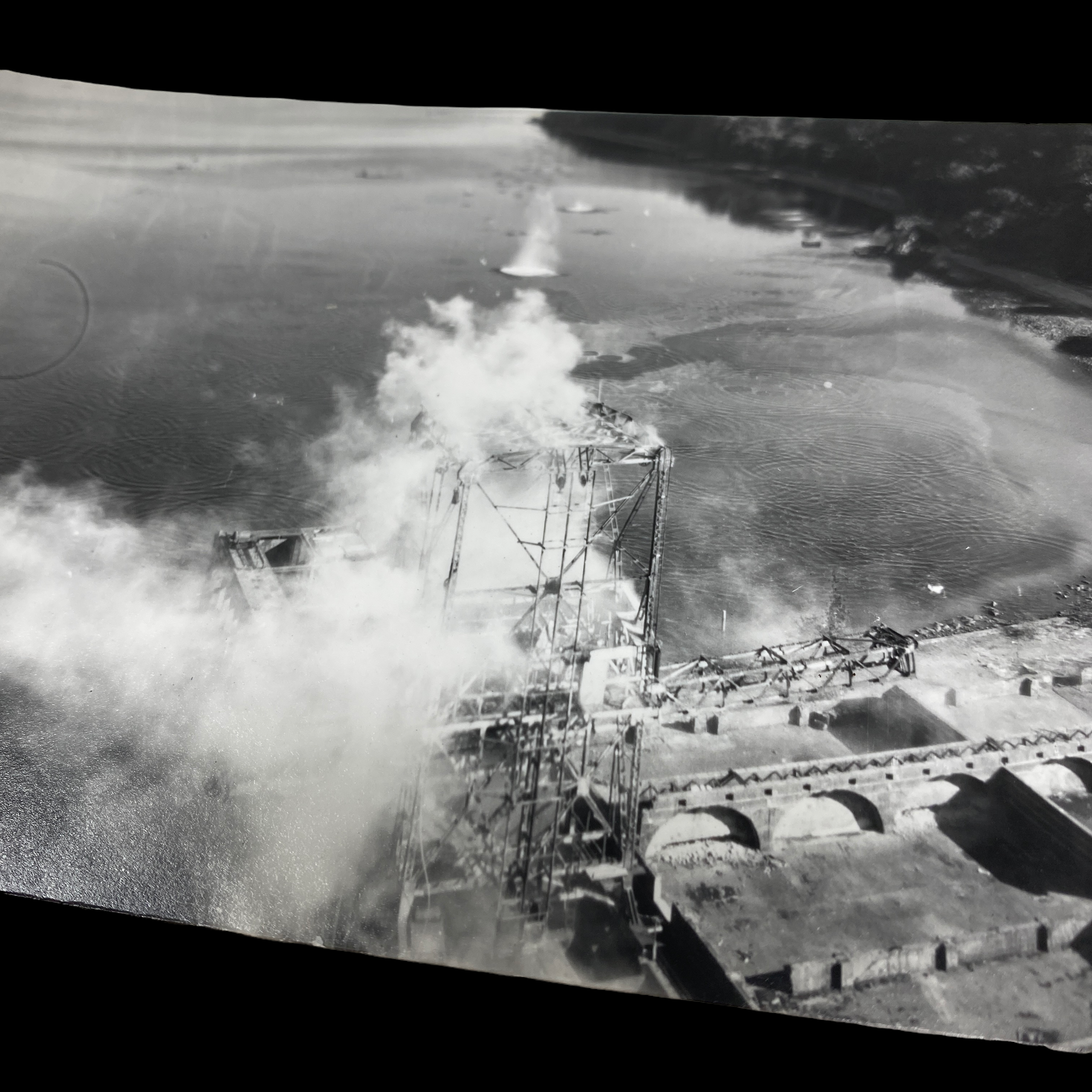WWII B-25 Mitchell Mission Raid Photograph Pacific Theater (Attacking Japanese Base)





WWII B-25 Mitchell Mission Raid Photograph Pacific Theater (Attacking Japanese Base)
Comes with hand-signed C.O.A.
This incredible and original WWII mission photograph was taken during an aerial bombardment raid in the South Pacific by a group of B-25 Mitchel American medium bombers. The B-25 bomber gained fame in the daring April 1942 Doolittle Raid. Lt. Col. James Doolittle humiliated the Japanese military by penetrating some of the world’s most formidable air defenses and dropping bombs a stone’s throw away from the Emperor’s Palace. The Doolittle Raid's B-25s were the only aircraft to bomb Tokyo until 1944, when B-29 Superfortresses began operating from the Mariana Islands. The B-25 bomber soldiered in every theater of war, excelling in multiple roles, chiefly as a ground-attack aircraft later in the war.
These low altitude mission raid photographs were extremely dangerous to take and were shot for intelligence purposes as well as post mission damage briefings. These black and white photographs were developed and printed at the Air Force base in the Pacific Theater immediately following the squadrons mission. Depending on the sensitivity and secrecy of these missions or areas they would often be marked RESTRICTED, CONFIDENTIAL, SECRET, or TOP SECRET.
The specific group and squadron of that participated in this area raid photographed is unknown, however, has been narrowed down to the GROUPS and SQUADRONS bellow based on their unit and combat histories in that area. This would make a great research artifact for any WWII or aviation collection.
B-25 in the Pacific Theater:
The majority of B-25s in American service were used in the war against Japan in Asia and the Pacific. The Mitchell fought from the Northern Pacific to the South Pacific and the Far East. These areas included the campaigns in the Aleutian Islands, Papua New Guinea, the Solomon Islands, New Britain, China, Burma and the island hopping campaign in the Central Pacific. The aircraft's potential as a ground-attack aircraft emerged during the Pacific war. The jungle environment reduced the usefulness of medium-level bombing, and made low-level attack the best tactic. Using similar mast height level tactics and skip bombing, the B-25 proved itself to be a capable anti-shipping weapon and sank many enemy sea vessels of various types. An ever-increasing number of forward firing guns made the B-25 a formidable strafing aircraft for island warfare. The strafer versions were the B-25C1/D1, the B-25J1 and with the NAA strafer nose, the J2 subseries.
In Burma, the B-25 was often used to attack Japanese communication links, especially bridges in central Burma. It also helped supply the besieged troops at Imphal in 1944. The China Air Task Force, the Chinese American Composite Wing, the First Air Commando Group, the 341st Bomb Group, and eventually, the relocated 12th Bomb Group, all operated the B-25 in the China Burma India Theater. Many of these missions involved battle-field isolation, interdiction, and close air support.
Later in the war, as the USAAF acquired bases in other parts of the Pacific, the Mitchell could strike targets in Indochina, Formosa, and Kyushu, increasing the usefulness of the B-25. It was also used in some of the shortest raids of the Pacific War, striking from Saipan against Guam and Tinian. The 41st Bomb Group used it against Japanese-occupied islands that had been bypassed by the main campaign, such as happened in the Marshall Islands.